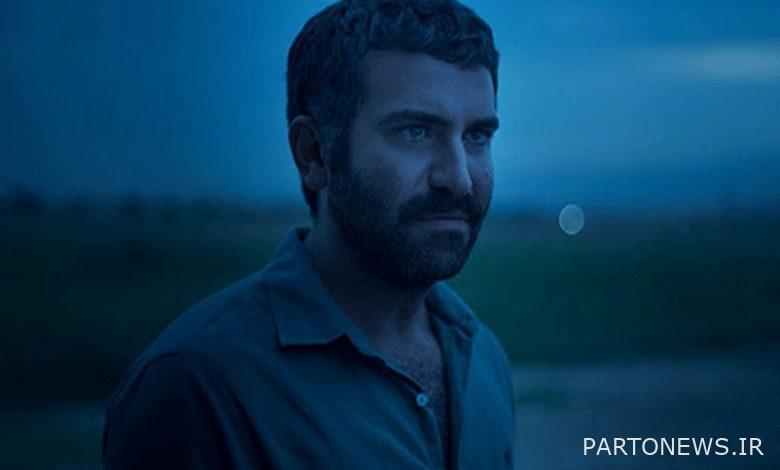Take a look at “Private Meeting” / A Heroic Exercise

“Private meeting” is not good, despite some of the views and decisions mentioned, and although the audience is not very happy when they leave the hall due to their identities with the two protagonists, but it makes them feel good. A clean romance without the common techniques in cinema to highlight the illusory dimensions of romance.
Theater News Base: Some romances in the movies have little to do with starting a relationship. Something happens and during it, two people become interested in each other. In these stories, the audience knows that they are on the side of a love story, but they like to taste the gradual injection of love into the body of the film. This formula has taken place in many romances of world cinema history and has also delivered many cult works in history.
The first film of “Omid Shams” is one of these examples, which has been welcomed by the audience of the festival in the poverty of generic romance in Iranian cinema. The story of a person who hooks up with a girl for non-romantic reasons, but in the end, he gets stuck in that hook and is hunted. This metamorphic transformation is what the audience likes, especially if the work has a romantic payoff and can captivate the audience.
One of the most important features of a “private meeting” is the polished expression, far removed from its margins. The narrative begins very early and does not waste time. Although it goes straight to the point of developing the main idea, it defines long introductions and devotes up to two-thirds of the work to Chinese introductions that require entry into the core of the story.
Although this long introduction is decorated with romantic ideas and does not bore the audience, but when we look at the final one-third, some questions arise in our minds, the foundation of which somehow questions the long introduction.
What the authors’ purpose in designing this long introduction might be can be summed up in two general headings: either they intended to shock the audience and the film by revealing Farhad (Houtan Shakiba)’s real intention in the final third, or In the first two-thirds of the story, they wanted to create a suspense to end it in the last third and finally decode it.
In the first form of the case, we must admit that exposing Farhad’s main intention from being close to Parvaneh (Prinaz Izdiar) did not cause much shock in the last third of the story. This did not happen because in the middle third of the film, the audience understands in a drop-by-drop way that Farhad has approached Parvaneh for non-romantic reasons. This approach can be seen in some of the film’s explicit dialogues, including where Taher tells Farhad, “Look at that young man.” He has a few lucky girls under his head. “If Najnabi takes Jato,” he simply realized. Therefore, with these explicit introductions to the film, one cannot expect the decoding to have taken place in the last third, with the intention of shocking the audience or suddenly revealing the winner.
In the second form, we do not see much suspension in the film. In the middle third of the story, the step-by-step injection of information into the audience negates the suspense in the film, and the audience, knowing that there are romantic reasons nearby, is unaware of the details that this decoding takes place in the last third of the story.
What is clear from the camera angle and even how the music is used is that the film does not intend to be suspended. It is clear that he clearly does not have much inclination to shock his audience and use dramatic tools to confront the audience with the essence of the issue, so it is not that the introduction is a result of the inexperience of the author team or the narrative bug, but this form of introduction feels more subject to realistic loyalty. Is the story. That the essence of the story is small enough to provide a narrative dough and a prelude to telling the truth, which it did.
In fact, the authors of the work did not intend to deliver a cinematic formula to their audience following a dramatic structure. In “private meeting” we see a kind of stereotyping of concepts such as pain, addiction, evil and even betrayal. The film does not want to become a collage of these concepts and be piled on many such works, and this is the difference between “private meeting” and the social works of recent years in Iranian cinema, which think they are shouting realism.
With this motivation and procedure, the ending of the film is formed. Of course, in the final form, the film can no longer be given such a right and it can not be considered a weak point of the story. The ending of the “private meeting” does not dictate much to the audience. It’s more of a collection and ending to a love story. That the film does not want to turn one of its two romantic poles into a badman and at the end of the work, hate Farhad. He ends the film romantically, like his body, so as not to confuse the audience too much with the issue of debt to the neighbor or the phrase “I love you” that the butterfly wrote on the windshield weeks ago and was not erased by rain.
In fact, the film intends to make Farhad a hero with Farhad’s final reaction. He had done the same thing with the butterfly before. When he arbitrarily swallows the glass, realizing his wife’s circumstances, or when in court, without any doubt, he admits that Farhad had no involvement in the matter, he nails his heroic nail into the audience’s feelings and beliefs.
Farhad’s final decision and softness is to balance such a flow in the film so that the original nature of romance is formed and it is not so much a function of the equations of the day and the subcultures enclosed in the type of communication of people with each other today.
Apart from this policy and the design he has devised for his narrative form, the film has also been very brilliant in performance. Definitely, as the first work of a young director, it gets a high acceptance score. The filming of the work and the multiplicity of cinematic and eye-catching frames that are tangible throughout the work is one of the strengths of the film and its association and the moment of the characters, which is portrayed by a great artist.
The editing of the film is very clever and designed in the right direction. The collective wisdom of editing, music, and directing, in moments of the film, raises the romantic density of the work and pinned the audience more tightly to the film. Especially in slow motion, which is the peak of intersection and effective cooperation of these three components with each other. Places where the categories of time failure are discussed, such as the sequence of butterfly fluttering on the plants of the plain, are those moments that are very difficult to write in the script, and with high artistry, these scenes become images and become the center of gravity of the film.
In some scenes, the film sees new performances from its main actors. Like the bathroom sequence, when Farhad realizes what a great sacrifice the butterfly has made. Or in the sequence in which Parvaneh rushes to inform Farhad that the agents have realized what he is doing, in every moment of that sequence, and especially when their couple’s face is glued to the wall, he witnesses a unique performance of the body language of “Prinaz Izdiar” and “Hotan Shakiba We are at a higher level than the roles of these two actors in other moments of the film.
“Private meeting” is not good, despite some of the views and decisions mentioned, and although the audience is not very happy when they leave the hall due to their identities with the two protagonists, but it makes them feel good. A clean romance without the common techniques in cinema to highlight the illusory dimensions of romance. The audience in this film admits that they are facing a special romance; Knows the limits of the characters in the story and does not judge them too soon. These are the important advantages that a calm and healthy romance brings to its audience; A romance that will definitely stay in the audience’s memory for a long time.

